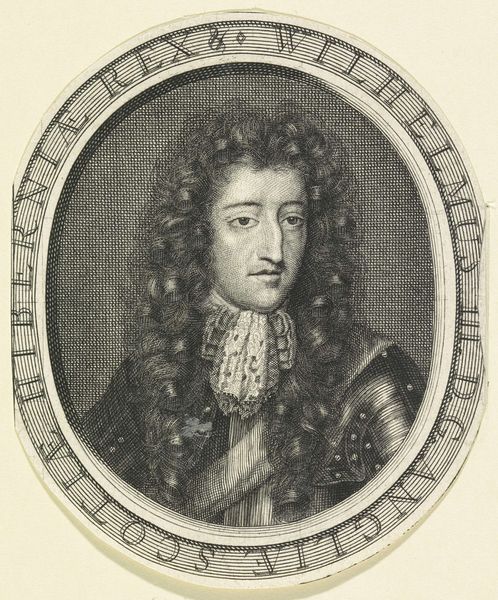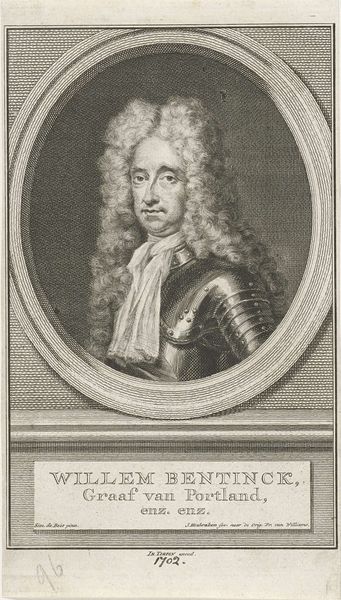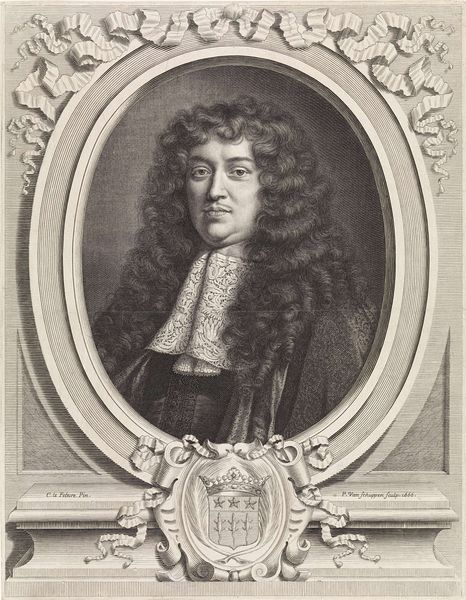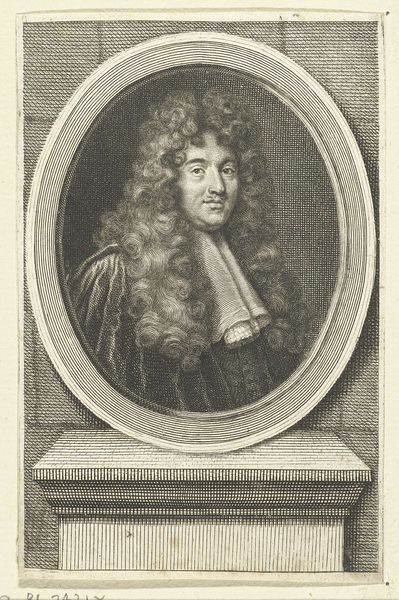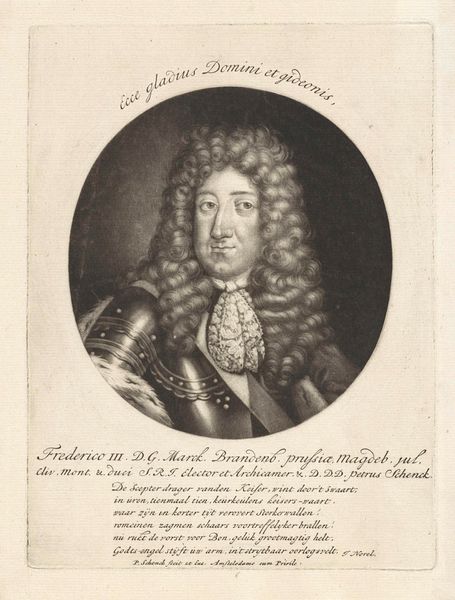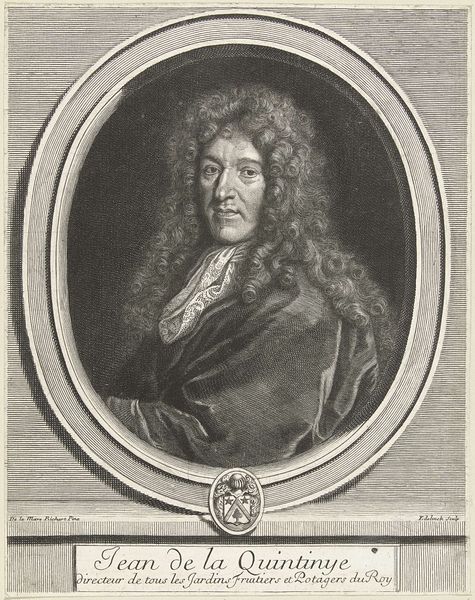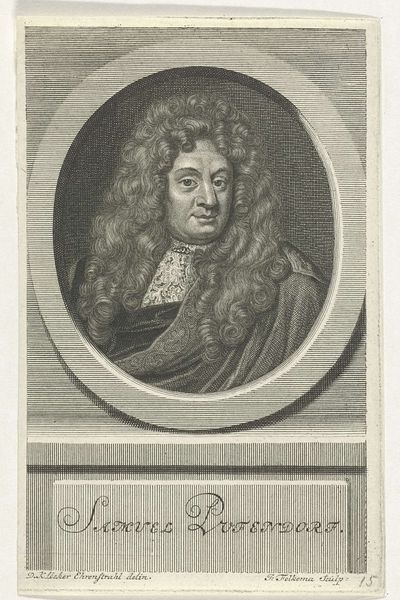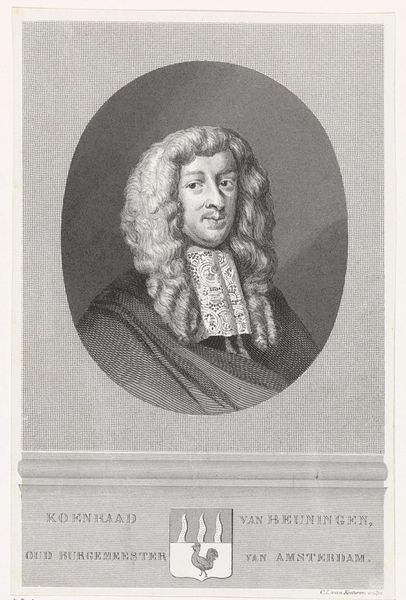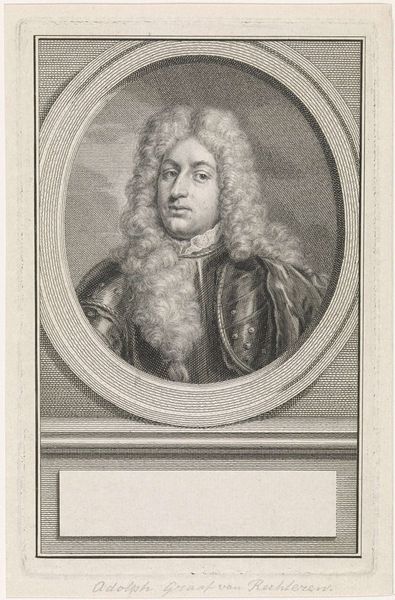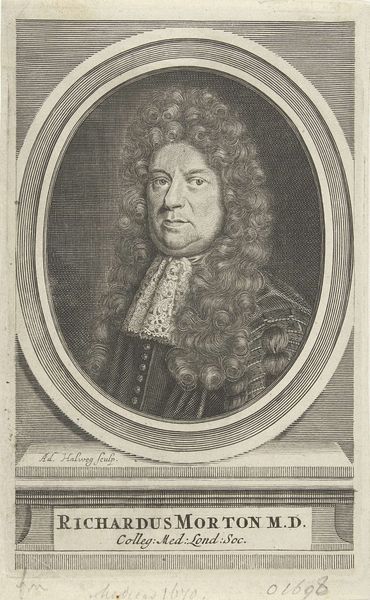
engraving
#
baroque
#
old engraving style
#
pencil drawing
#
history-painting
#
engraving
Dimensions: height 141 mm, width 87 mm
Copyright: Rijks Museum: Open Domain
Curator: Looking at "Portret van Willem III, prins van Oranje," an engraving likely created between 1670 and 1749, we can begin to explore the complexities of power, representation, and the construction of identity during the Baroque era. Editor: Oh, my! He does have that serious gaze down, doesn’t he? The details in the engraving, the way his hair curls and catches light, it almost makes you want to burst out laughing! A very self-conscious painting with its rigid perfection! Curator: Precisely. The formal portraiture of this period served as a crucial tool in solidifying authority and legacy. Willem III is depicted in armour, a visual cue meant to resonate with leadership, military might, and, by extension, political stability. However, it simultaneously reflects the gendered constraints imposed upon masculine figures during that era. Editor: Armor... that’s definitely a sign! This era always seems so concerned with showing off how powerful everyone is; what you could possess versus actually getting your hands dirty! It is quite comical in a way because one doesn’t need armor if one's society isn't about conflict. Curator: This speaks to a historical moment characterized by continuous upheaval and political unrest in the region. He later became the King of England, Ireland, and Scotland; therefore, this portrait serves to further cement an image of immutable authority that resonates on both sides of the channel. In what way does that manifest, and for which public, becomes a poignant intersection. Editor: Yeah, it seems more like this artwork attempts to communicate about who they believed William should be; so I understand completely what you mean about immutable authority... It has a dreamlike quality. All engravings have that ghostly affect that lets me daydream freely. I start wondering how this engraving of Willem would behave in today's day and age! What if Willem, too, wasn’t quite so still. What if there was a mischievous twinkle? That’s what makes it, I believe, endlessly captivating. Curator: Those points about the potential gaps and imaginative freedom afforded to the contemporary viewer really underscore why this type of historical artwork still sparks interest in critical race studies. And also the relationship between art, social construction, and collective identity. Editor: Exactly. Curator: These tensions offer ample opportunity for discourse across multiple eras! Editor: Completely, thank you.
Comments
No comments
Be the first to comment and join the conversation on the ultimate creative platform.
